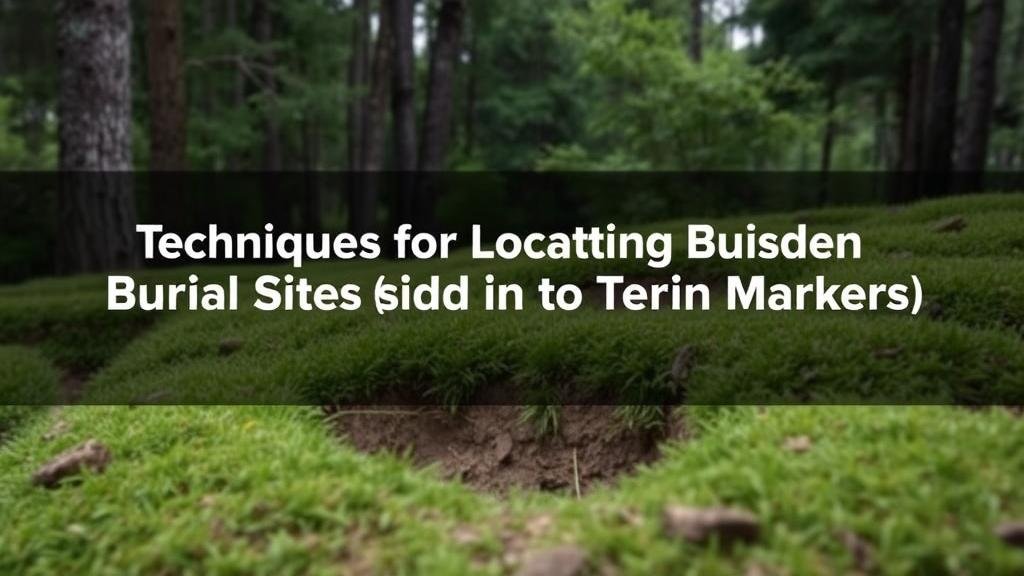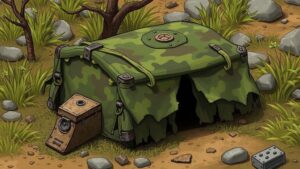Techniques for Locating Hidden Burial Sites Based on Terrain Markers
Techniques for Locating Hidden Burial Sites Based on Terrain Markers
The discovery of hidden burial sites presents unique challenges for archaeologists, forensic specialists, and historians alike. Techniques for locating these sites often rely on examining the landscape and its features, which can serve as crucial terrain markers. This article explores several methods employed in identifying hidden burial sites, highlighting the various aspects of terrain analysis, including topography, vegetation, soil composition, and historical records.
Understanding Terrain Markers
Terrain markers are natural or artificial features of the landscape that can indicate the presence of human activity, including hidden graves. e markers can vary from subtle differences in topography to distinct vegetation patterns. Understanding these markers is essential for formulating effective search strategies.
- Topography: Variations in elevation can be significant. For example, depressions or mounds may suggest buried remains.
- Vegetation: Different plant growth can indicate disturbed soil or the decay of organic materials related to burials.
- Soil Composition: Changes in soil color, texture, or moisture levels can signal areas of recent excavation or burial.
Topographical Analysis
Topographical maps provide vital information regarding the physical features of an area. By studying these maps, investigators can identify landforms that may correlate with burial sites. A common analytical technique is to look for:
- Depressions or sinkholes that could indicate grave shafts.
- Changes in elevation that may signify previous human activities.
- Waterways or floodplains, as many cultures historically used these areas for burials.
An example of effective topographical analysis occurred during the excavation of a burial site in the US Midwest. Archaeologists used LiDAR (Light Detection and Ranging) technology to uncover subtle changes in the land surface, revealing potential burial sites beneath dense forest canopies. resulting three-dimensional models provided insight that would have been unachievable through ground investigations alone.
Vegetation Patterns
Vegetation can act as a telling indicator of hidden burial sites. Different plant species have varying growth patterns based on the underlying soil conditions and the presence of organic material. Investigators often look for:
- Areas with unusual plant growth or die-off, which can indicate changes in soil conditions due to decomposition.
- Thickets or clusters of specific plants known to thrive in disturbed soils.
A case study in the United Kingdom highlighted the use of vegetation to locate a burial site associated with a historical battle. Investigators noted an area of unusually lush vegetation, contrasting with the sparser surrounding flora. Further analysis revealed it was an area of disturbed land, leading to the discovery of multiple interred remains.
Soil Analysis Techniques
Soil analysis is an important aspect of locating burial sites. Investigators often assess soil composition for signs of disturbance or organic degradation. Techniques include:
- Soil core sampling to analyze layers that may show historical human activity.
- Ground-penetrating radar (GPR) to identify anomalies below the surface.
For example, in a suburban area in New York, GPR was utilized in conjunction with soil sampling to detect a series of anomalies that signaled possible grave shafts. Upon excavation, the findings validated the technologys efficacy in pinpointing hidden burial sites more accurately than traditional methods.
Utilizing Historical Records
Historical documents and maps can provide critical context when searching for burial sites. Investigators frequently consult:
- Cemetery records to understand burial practices from past eras.
- Land use records that may indicate where graveyards once existed.
One notable example includes the discovery of a clandestine burial site associated with a 19th-century asylum in Massachusetts. By reviewing historical documents, researchers pinpointed the site’s probable location based on the asylum’s known practices, leading to the identification of several unmarked graves through excavations.
Conclusion and Future Directions
The techniques for locating hidden burial sites using terrain markers are as diverse as the contexts in which they are applied. The integration of various methods, including topographical analysis, vegetation examination, soil testing, and historical research, enhances the likelihood of successful identification and documentation of burial sites. Also, emerging technologies such as remote sensing and advanced geospatial analysis are paving the way for more refined search techniques.
As we move forward, a multidisciplinary approach will be crucial, combining traditional archaeological methods with modern technology. Practitioners in the field must remain vigilant in adapting their techniques to the complexities of different environments while staying informed on advancements in forensic and archaeological research.
Ultimately, successfully locating hidden burial sites not only provides closure to families and communities but also contributes significantly to our understanding of historical practices and cultures.



